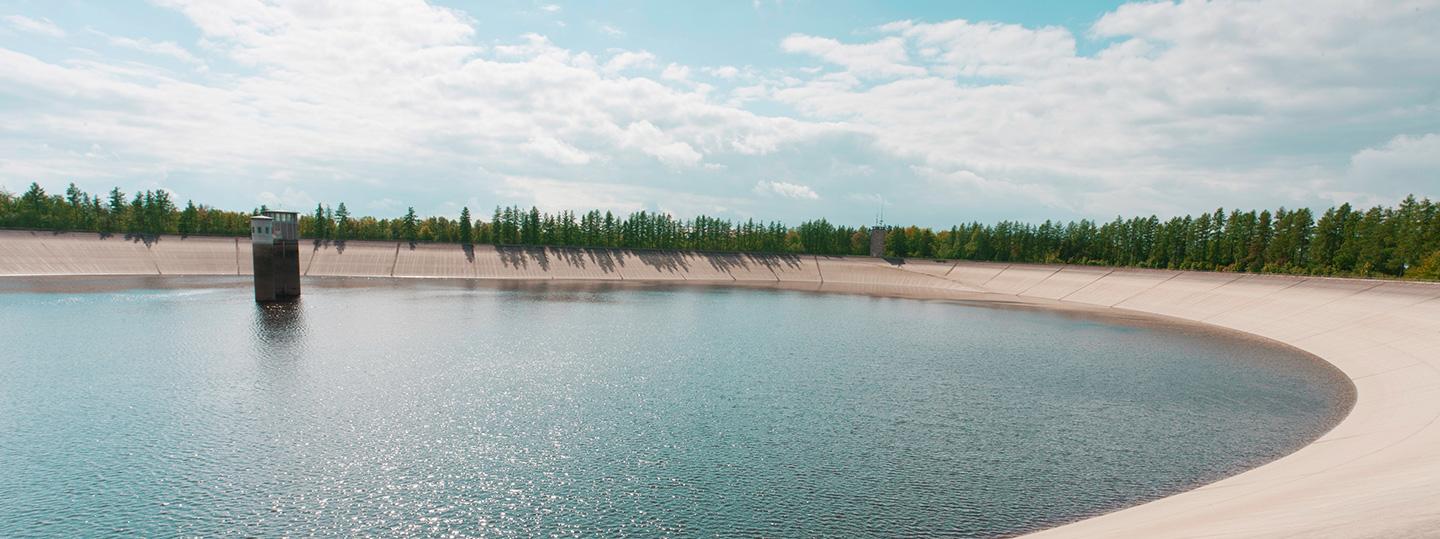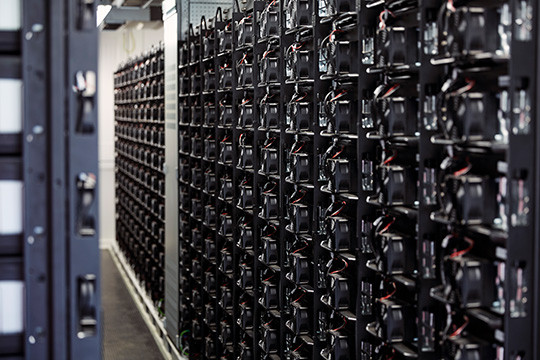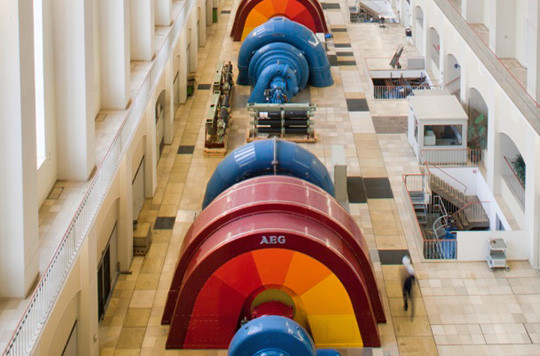
Hydropower
Hydropower is the renewable energy with the highest installed capacity worldwide. The ENGIE Group relies on the energy of water with hydropower plants in nine countries and a total power installed capacity of around 18 gigawatts. In Germany, we operate the Pfreimd power plant group in the Upper Palatinate.
Triple use of hydropower
Hydropower is diverse. We at ENGIE Deutschland know this very well. In the Pfreimd power plant group, we use them in three ways: to generate electricity, store energy and stabilize the power grid.
Three reservoirs and three power plants in five locations extend over 13 river kilometers. The topographical conditions offer ideal conditions for the utilization of hydropower for regenerative power generation as well as for the very efficient pumped storage hydroelectric plants.
Delivery of balancing capacity
Renewable energies, especially wind turbines and solar plants, are contributing more and more to electricity generation in Germany every year. However, because they cannot generate power continuously, technologies are needed around the clock to keep the power grid stable and to compensate for frequency fluctuations - in other words, control power must be provided.
No problem for the Reisach power plant – thanks to the very fast reaction times of our plants and the continuous technical optimizations. Following a technically demanding modification, the three turbine sets can now also be operated in what is called a hydraulic short circuit. In this mode of operation, the pumped storage units regulate the turbine output while their pumps fill the storage basin above at the same moment. This enables continuous control operation, one of the prerequisites for the provision of primary control power 24 hours a day.
Pumped storage and battery storage for grid stability
A battery storage facility at the Tanzmühle site complements the pumped storage power plants, which contribute to your secure energy supply by providing primary and secondary control power as well as tertiary control power. The two facilities can secure each other.
How our pumped storage power plants work
Pumped storage power plants are used to store electrical energy by converting it into potential energy. For this purpose, water is pumped with high efficiency to a higher storage tank. The characteristic feature of a pumped storage power plant is its reversible plant operation. A turbine, a motor generator and a pump are mounted on a shaft and form a unit that has two modes of operation: When power is required, the motor generator operates as a generator and produces electric power driven by the turbine. The water flows from the upper to the lower basin and supplies the drive power. When there is excess electrical power in the grid, the motor generator operates as an electric motor and drives the pump, which pumps the water back into the upper basin.
Technical data of our hydropower plants
The Reisach pumped storage power plant went into operation in 1955. It has three sets of pumped storage tanks with a separate pump and turbine, which are particularly suitable for supplying control energy.
- Pumped storage units: 3
- Output: 107 MW
- Average drop and head: 179.05 m
- Storage volume of the Trausnitz storage reservoir and Rabenleite elevated storage reservoir: 1.5 million m³
The pumped storage power station Tanzmühle began operation in 1959. Its main purpose is to pump up the inflow of the Pfreimd River collected in the Kainzmühl reservoir. This significantly increases the overall efficiency of the Pfreimd power plant group.
Hydroelectric power plants on rivers and canals use the difference in elevation between upstream and downstream water, the so-called gradient, to generate electricity. They work reliably around the clock.
- Pumped storage unit: 1
- Output: 30 MW
- Average drop and head: 122.45 m
- Output of the power station (Francis turbine): 3.3 MW
- Minimum water discharge into the Pfreimd riverbed: 0.45 m³/sec
- Power utilization of the minimum water discharge (Francis turbine): 182 kW
- Average drop height of the two Francis turbines: 26.80 m
The Tanzmühle battery storage supplements the pumped storage power plants on the Pfreimd. Some 39,600 lithium-ion cells make up the central component of the battery storage system. They convert chemical into electrical energy and vice versa. The advantage of a battery storage system is the very fast control and start-up time. Since there are no masses to move, the system is ready to start in a few seconds.
- Input and output power at the grid connection: 12.5 MW
- Prequalification for primary control power: +/- 12 MW
- Number of cycles per year: +/- 400
The Kainzmühl dam has three weir gates, a bottom outlet, a so-called suction lift and the inlet to the Tanzmühle power plant. It has a usable volume of 800,000 cubic meters of water, which is associated with a water level fluctuation of around four meters.
- Minimum water discharge into the Pfreimd riverbed: 0.70 m³/sec
- Output energy utilization of the minimum water discharge (pipe turbine): 95 kW
- Mean drop height: 9.5 m
- Flood relief system for maximum: 260 m³/sec
The Trausnitz running water power plant is housed in the Trausnitz weir system. With the running-off water of the power plant group, environmentally friendly electricity is generated in the running water power plant Trausnitz by two Kaplan turbines. The hydropower plant was commissioned in 1952.
- Running water machines: 2
- Output: 1.8 MW
- Average drop height: 11 m
- Spillway for maximum: 400 m³/sec
2020/2021
Major overhaul: including replacement of the four machine transformers and installation of new ball valves, each weighing 75 tons
2018
Construction of a 12.5 MW lithium-ion battery storage unit
2015
Major overhaul: structural repair of the underground pressure tunnels and the high reservoir, recoiling of a motor-generator, overhaul of two high-pressure slide valves, modernization of numerous mechanical, electrotechnical and control system components, new turbine runners with higher output for all four pumped-storage units.
2012
Technical conversion to increase regulating and reserve power capacities
2009
Acquisition by GDF SUEZ Energie Deutschland AG; the company has been operating under the name ENGIE Deutschland since 2015
2003–2007
Revision of the Reisach and Tanzmühle pumped storage units
1993/1994–1998
Modernization and general refurbishment of the power plant group, in particular general refurbishment of the Rabenleite high reservoir and modernization of the control technology of the entire power plant group
1984
Remote control for Tanzmühle pumped storage power plant
1983–1990
Overhaul of the machine units
1951–1961
Construction and commissioning of the Jansen power plant group by Energieversorgung Ostbayern
Please contact us
92555 Trausnitz

